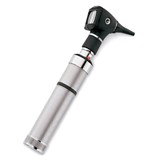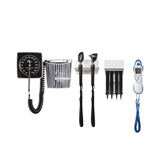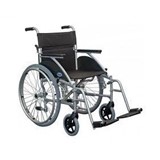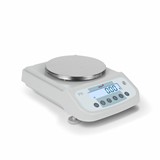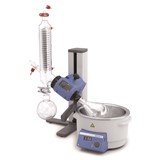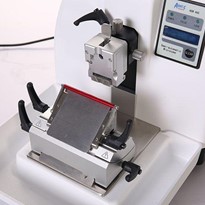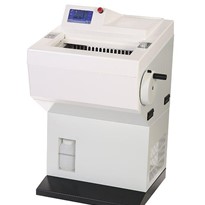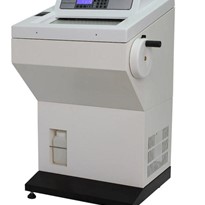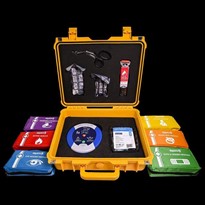Introduction
The rotary microtome stands as an indispensable tool in histology and pathology laboratories, facilitating the precision sectioning of tissues for microscopic examination. As technology advances, the market offers a plethora of rotary microtome models, each designed with unique features and specifications. Choosing the right rotary microtome is a crucial decision for laboratories seeking optimal sectioning quality and efficiency. This article aims to provide an in-depth guide on key considerations to help you make an informed decision when selecting a rotary microtome.
Sectioning Precision and Thickness
The primary function of a rotary microtome is to produce thin, uniform tissue sections for microscopic analysis. Consider the sectioning precision and thickness range offered by different microtome models. Look for instruments that provide a wide range of section thickness settings to accommodate diverse tissue types and experimental requirements. Instruments with precise control mechanisms and fine adjustments ensure reproducibility and consistency in sectioning.
Sample Size and Compatibility
Evaluate the range of sample sizes that the rotary microtome can accommodate. Different microtome models are designed to handle varying sample dimensions, from small biopsies to larger tissue blocks. Choose a microtome with adjustable specimen clamps or specimen orientation features to enhance flexibility in sample positioning. Compatibility with a variety of specimen molds and chucks allows for efficient sectioning of different tissue shapes and sizes.
Ergonomics and User-Friendly Design
The ergonomic design of a rotary microtome contributes significantly to user comfort and operational efficiency. Look for features such as a user-friendly control panel, easy-to-operate handwheel, and comfortable hand rests. Some advanced models offer touch-screen interfaces and programmable settings for enhanced user experience. Ergonomic considerations become particularly important for laboratories with high sample throughput or extended sectioning sessions.
Knife Holder and Blade Options
The knife holder and blade system play a crucial role in determining the quality of tissue sections. Rotary microtomes commonly utilize disposable blades, and the choice of blade holder can impact sectioning performance. Opt for a microtome with a sturdy knife holder that minimizes vibrations and ensures stability during sectioning. Consider models that allow for the use of different types of blades, including disposable high-profile or low-profile blades, depending on your specific application needs.
Automatic Sectioning and Motorization
Some rotary microtomes come equipped with motorized or automatic sectioning capabilities, enhancing precision and workflow efficiency. Motorized advancements reduce user-dependent variations in section thickness and aid in achieving consistently thin sections. Consider whether the benefits of motorization align with the requirements of your laboratory and if the microtome offers manual operation as well for added flexibility.
Cooling Systems for Cryosectioning
For laboratories involved in cryosectioning applications, the presence of a reliable cooling system is crucial. Choose a rotary microtome with features such as a temperature-controlled specimen holder or a cooling chamber. This ensures that samples remain at the desired temperature during sectioning, facilitating the production of high-quality frozen tissue sections.
Safety Features and Enclosures
Prioritize the safety features incorporated into the rotary microtome design. Consider models with protective enclosures or barriers that prevent accidental contact with moving parts. Some microtomes include features such as blade retractors or safety locks to minimize the risk of injuries during operation. Safety is paramount, especially in high-throughput laboratories where operators may be exposed to prolonged usage.
Maintenance and Durability
The longevity of a rotary microtome depends on its build quality and ease of maintenance. Look for models constructed from durable materials, such as corrosion-resistant metals or high-quality plastics. Assess the accessibility of critical components for routine cleaning and lubrication. Some microtomes feature self-lubricating systems or low-maintenance designs, reducing downtime and ensuring consistent performance over time.
Digital Imaging Compatibility
Incorporating digital imaging into histological workflows is becoming increasingly common. Consider whether the rotary microtome is compatible with digital imaging systems and whether it facilitates the integration of cameras or imaging devices. This compatibility ensures that the sections obtained can be seamlessly transferred to digital platforms for further analysis, archiving, or sharing.
Budget Considerations and Cost of Ownership
While budget constraints are a significant factor, it is crucial to consider the overall cost of ownership. Evaluate the long-term investment, taking into account factors such as maintenance costs, blade replacement expenses, and the availability of affordable consumables. In some cases, investing in a slightly higher-priced rotary microtome with advanced features and durability may result in cost savings over time due to reduced maintenance and operational issues.
User Training and Technical Support
Selecting a rotary microtome from a reputable manufacturer ensures access to comprehensive user manuals, training resources, and technical support. Consider the availability of training programs for laboratory staff and the responsiveness of the manufacturer's support team. Timely software updates and readily accessible technical assistance are crucial for troubleshooting issues and ensuring the optimal performance of the microtome.
Reviews and User Experiences
Before finalizing your decision, seek feedback from other researchers, pathologists, and laboratory professionals who have hands-on experience with the rotary microtomes under consideration. User reviews and testimonials provide valuable insights into the real-world performance, reliability, and ease of use of the microtome. Online forums, scientific conferences, and networking events are excellent platforms for gathering firsthand experiences and recommendations from peers in the field.
Conclusion
Choosing the right rotary microtome for your laboratory involves a comprehensive assessment of various factors to ensure optimal sectioning precision, efficiency, and user satisfaction. By considering factors such as sectioning precision, sample size compatibility, ergonomics, knife holder and blade options, automatic sectioning, cooling systems, safety features, maintenance, digital imaging compatibility, budget considerations, user training, and user experiences, you can make an informed decision that aligns with the specific needs of your laboratory.
Stay abreast of technological advancements and emerging trends in histological techniques to make future-ready decisions. The careful consideration of these factors will empower you to select a rotary microtome that not only meets your current sectioning requirements but also provides a platform for future growth and scientific excellence in histopathology and research.


.jpg)
